

I had failed to get really good alignment during my last clear night and I had wondered if the last picture on the previous page could act as a guide to alignment by getting the vignetting symmetrical within the frame.
I started by trying to move the vignetting to be symmetrical by working during the day. This was not successful because the MX716 was just too sensitive to get a sensible exposure in daylight. So I tried again at night and managed to get the bright patch more central by a small adjustment of one knob.
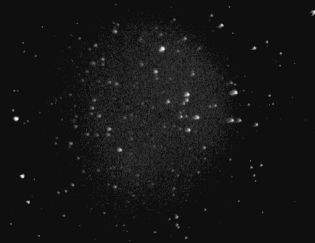
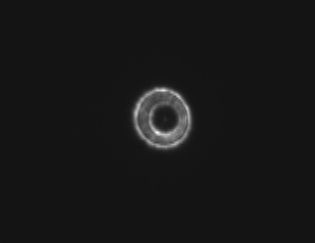
|
The bright patch in the left-hand picture is roughly central, but the out-of-focus image of a star is not symmetrical. The alignment is still not correct. |
I decided that the only solution was to start from scratch and to do the job properly.
I started by using my Atik 1-HS camera at prime focus of the LX200. I chose this camera because it is monochrome and works with K3CCDTools. This allowed me to use the circular graticule in K3CCDTools to help me as suggested by
Jan Timmermans (click on his picture to see an enlarged version). I didn't have that perfect night that Jan describes, so my images were not so easily compared with the graticule. So I captured 100-frame AVI files and stacked the images in K3CCDTools. The results are below.
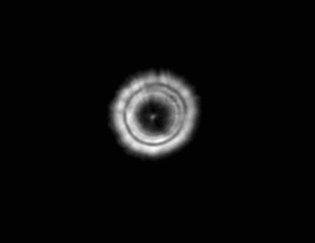
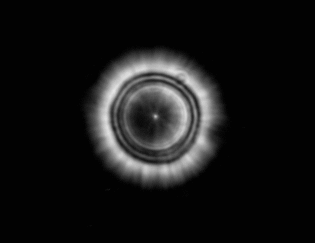
|
On the left, the picture at the beginning of this phase. After many small adjustments I arrived at the picture on the right. I had gone both sides of focus and this picture is a little more out of focus but is on the side I always use (final movement moving the mirror in). Although there may be a slight asymmetry at the 5 o'clock position, at the time I thought this was as near perfect as I was likely to get. |
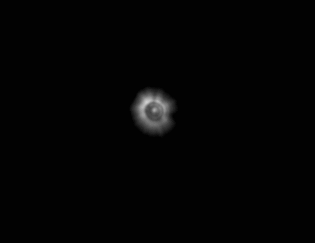
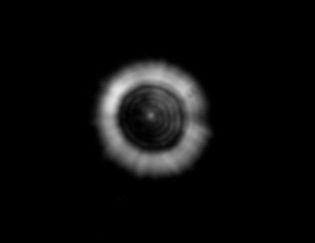
|
I tried going closer to focus and got the picture on the left here. At the time I thought this wasn't clear enough to be definitive, so I added my X2 teleadaptor lens and, after refocussing and a few minute adjustments, I got the picture on the right. I felt that this was good, but to help I added a red circle, and you can see this in the mouseover. (The graphics program I used to put the circle on did not allow me to specify the size and centre of the circle, so both had to be judged by eye. Consequently interpreting the image relative to it should be done bearing in mind that it may not be exactly in the right place.) |
This alignment may not be quite perfect, but is now very close, so I decided to switch to my MX716 camera and try on an open cluster. By this time (midnight) the cluster I used before (M37) was too low in the sky. All the Messier objects high in the sky were galaxies, so I went with M44 and M67.
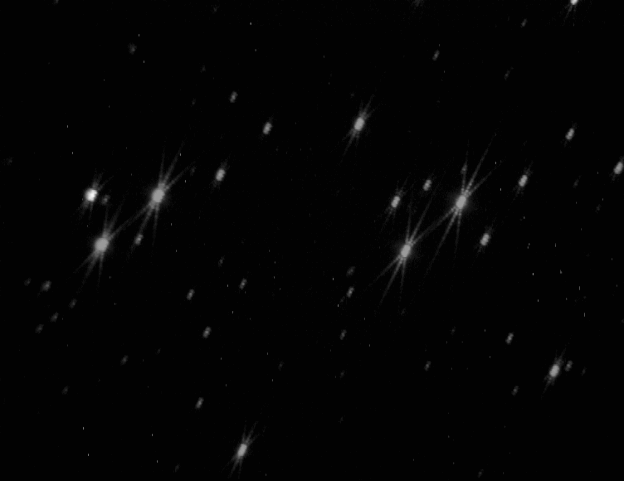
|
M44 is actually too big for an image at prime focus, but I did manage two pictures with the Bahtinov mask which I have superimposed here. (The two bright stars on the left and the right are the same two stars in the two exposures. The brighter star just to the left of the left-hand version is actually two stars which I carefully superimposed.) As you can see there is a small difference in focus across the image, but I think it is smaller than it used to be (but then this is prime focus not with the focal reducer). What looks like coma is actually caused by the mask. |
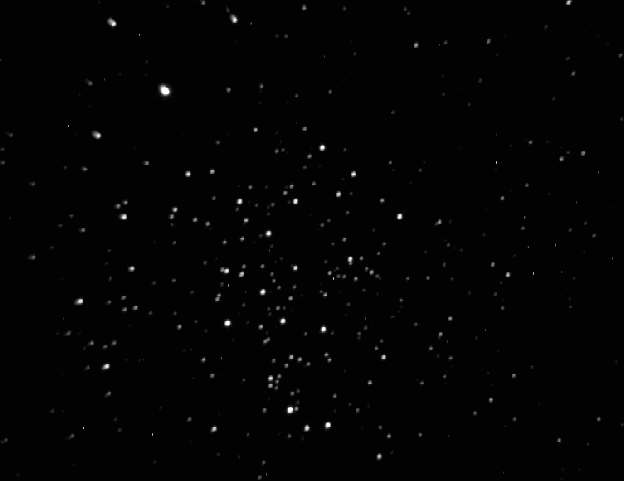
|
Finally I fitted my focal reducer and took this picture of M67 As you can see there is still some coma, mainly on the left, but it seems to me that it is much better than it was when I started all this. |
It looks as though this conclusion may be premature. A few nights later I was able to get to M37 and took the picture below.
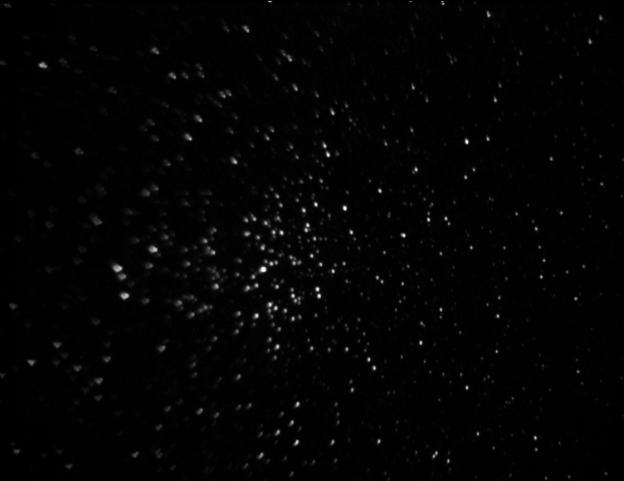
|
Just as bad, if not worse, than it was before. So maybe it is not the alignment that is the issue. The focus appears to be good for about three fifths of the frame from the right and then go way out of focus. So what does Mr. Bahtinov think? |
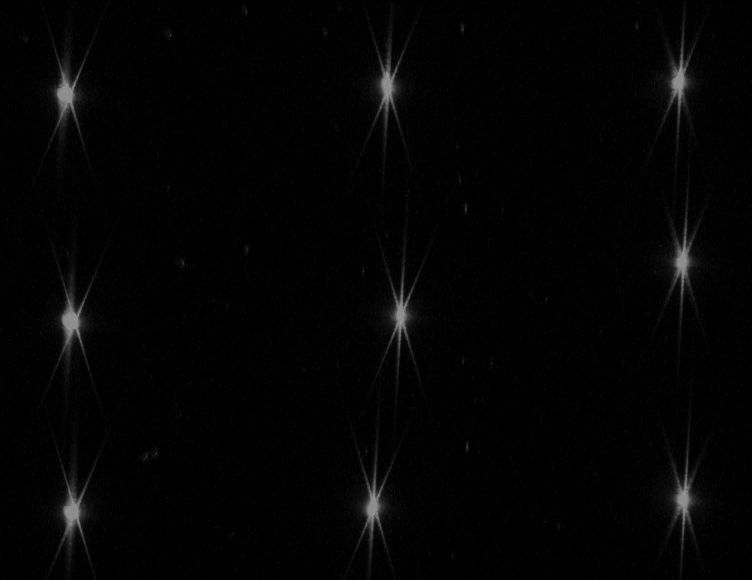
|
And here is what the Bahtinov mask made of it. This is the same star imaged at different parts of the frame. The focus is good at the centre, slightly out one way to the right, badly out the other way to the left, and slightly out up and down. |
Is there something out of alignment in my imaging train? To attempt to answer this question, I moved the whole thing from focal reducer to camera onto my ETX125. To do so I did have to remove the focal reducer and put it back again, but it is all screwed together.
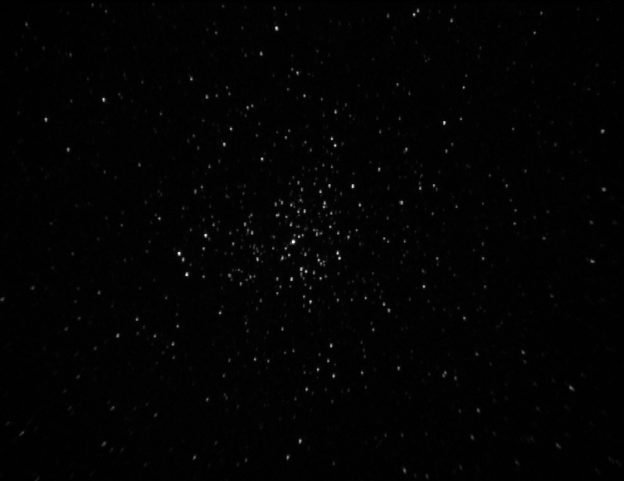
|
Well neigh perfect! The scale is a little smaller because the ETX has a shorter focal length than the LX. It is also at f/5 rather than f/3.3. If the imaging train is bent, it looks as though the only possible place is the junction of the focal reducer with the telescope. Is that likely? I would have thought even a small deviation from straight at that point would cause vignetting at the camera. |
The puzzle continues....
Home Equipment Part 1 Part 2 Part 3 Part 5
Part 6 Part 7 Part 8 Part 9